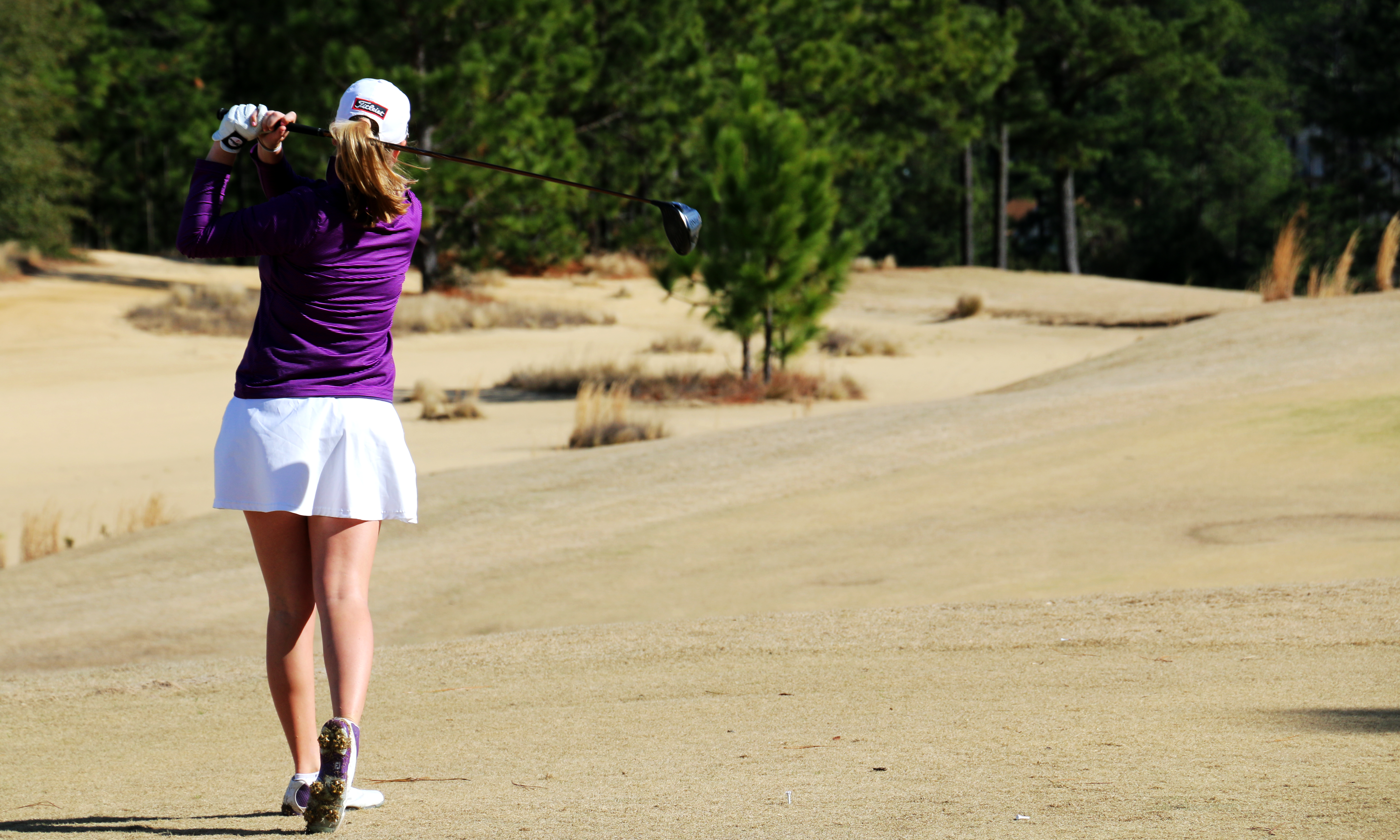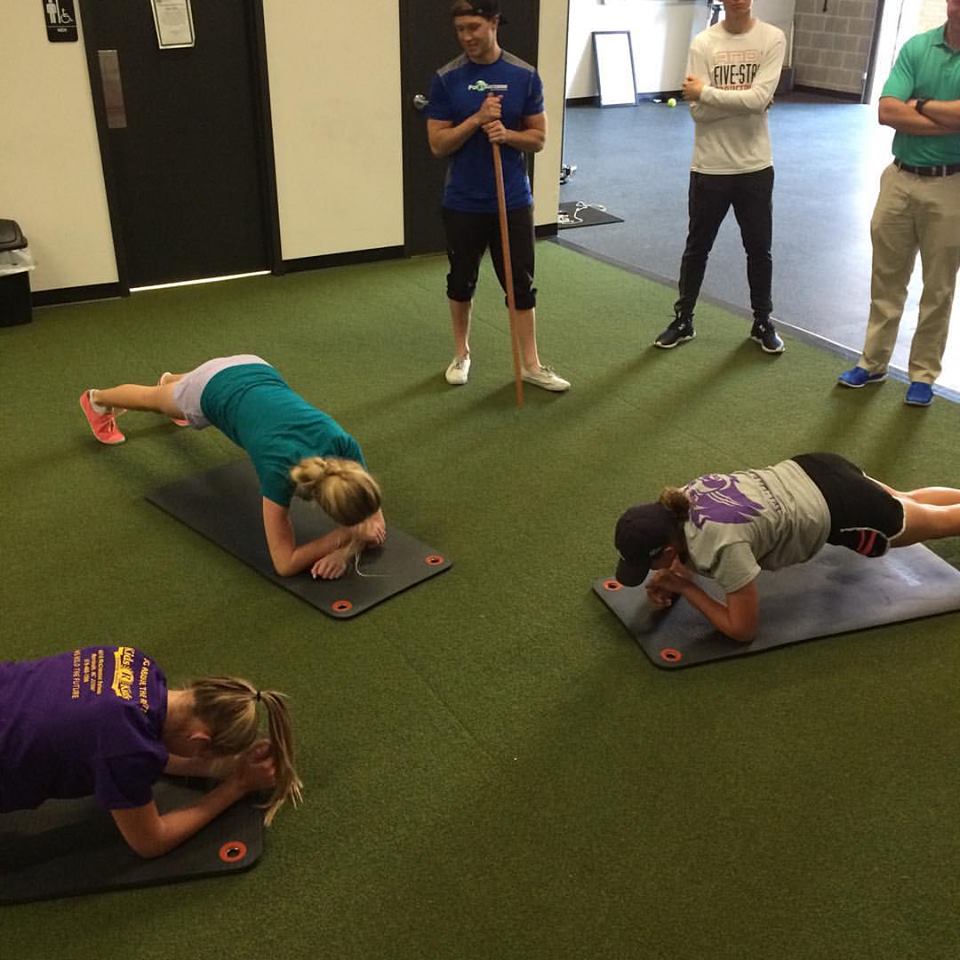This article is part of a guest series to the RecruitPKB “Complete Golfer” program by Chris Finn, MSPT, CSCS, owner of Par4Success in Cary, North Carolina.
- 1. I’m not a football player, I don’t need to weight train?
The golf swing is a fast, explosive, and powerful motion. Power is an application of force. You need to have force to be able to apply it. Force is developed by gaining strength. In fact, the stronger and more powerful you are, the less work each swing requires, the longer you can play and continue to hit the ball with as much power on the 18th as on the 1st.The best gains in distance we have seen have come from players who increase strength in big athletic golf movement patterns such as squats, deadlifts, and clean variations. Becoming a fast, explosive athlete should be a priority for any junior golfer, especially at the high school level. This will NOT come from mass amounts of volume at low weights like in programs we have seen given to entire teams by coaches.
That being said, the first priority should always be to build a solid foundation and good movement patterns before actually allowing the challenge in an exercise to become the weight itself. Olympic lifting is one of the most beneficial ways any athlete can become more explosive along with plyometrics, and should be highly touted rather than feared by a golf athlete. It’s not uncommon for us to see one of our juniors pounding the ball 40 yards past a competitor in a tournament. It’s because they all train with intelligently for the sport of golf with weights; they do not run cross country and do only core body weight exercises.
If you don’t want to generate power or improve your efficiency then you should avoid weights and run long distances.
- I workout 1x/week, that is plenty with some core work on the side.
You should be doing something to benefit your training on a daily basis. Even if that something is nothing (off days). For the middle and high school athlete 3-5 times a week is plenty. Any less than 3 and you may not benefit as much as you could. Any more than 5 and you may end up doing too much.We consider 4 days to be ideal, with a 5th day devoted to recovery. Each day the athlete is focusing on different skills in gym such as max speed, acceleration, plyometrics or various strength patterns.
Middle school players and high schoolers new to training should start out more conservatively with 3 days and a 4th devoted to recovery. High school players can train up to 5 times, and should focus on doing some aspect of mobility work on a daily basis. This is especially true for those hoping to play above the high school level. - I don’t like to workout because it is hard. I will still be just as competitive though.
Your best bet is to find a way by focusing on what it will produce for you on the course. If you don’t enjoy it you will never put forth the effort necessary to excel. Approaching it with the attitude of “This is the only way to build a better swing machine” will change that. Settle in for the long run, show up with a good attitude, eat well, and you might just catch yourself having fun.The fact of the matter is that at the lower levels of junior golf you likely will be just as competitive as the kids or pretty close. As the competition becomes tougher, though, the gap widens significantly. If you don’t mind always hitting first on your second shot then don’t worry about not liking to workout.
- I’m too young to start?
You should start as soon as you can commit to at least 3 days a week, and remember that 3 days a week can include a recovery day! If you have a month stretch coming up where you cannot commit it may be a better idea to hold off until it’s over. Too often we see someone jump the gun and start only to fall off quickly simply because they didn’t wait an extra 3-4 weeks. This bad start can carry over for much longer than it needs to, and should be avoided if at all possible!
Juniors as young as 10 will benefit from engaging in golf fitness programs (obviously with different goals than 16 year olds!). Under 10 should be playing multiple sports, climbing trees and playing outside to develop athletic skills such as running, jumping and sprinting.
- My doctor said I am in a growth spurt and I shouldn’t work out in a golf fitness program because it could stunt my growth.
This is unfortunately one of the biggest fallacies we have come across in the medical community and is based on no literature or research what so ever unfortunately. There is actually a HUGE body of research showing that weightlifting in juniors improves bone density, decreases risk of injury, improves coordination (one of the biggest challenges during a growth spurt!) and improves their overall health. There is absolutely NO evidence in the literature that shows negative effects on growth from engaging in weight lifting or other athletic development activities.
Probably the biggest overlooked issue here is that for a junior golfer, going through a growth spurt in season can be frustrating. Arms and legs are longer, and the element of control can be compromised. A good training program has been shown in research (and we have seen it in our facility) to help an athlete learn and maintain good motor control during a growth spurt because when they are in the gym they are practicing movement with the newly acquired changes.
A good golf fitness program does not only consist of weight training. While an integral part based on the biological age (not chronological age) of the child, there should also be sprinting, change of direction training, plyometrics, mobility and just overall movement training in all planes of motion including rotation with focus on core and scapular stability and control.
More questions or things you have heard about golf fitness? Please let us know so we can answer them for you at info@par4success.com!
For more information, contact Chris Finn, MSPT, CSCS, TPIMP at Par4Success, www.par4success.com, 919-377-2084.








Love this article, Chris and Brandi. I can say that Channing’s distance and speed has grown DRAMATICALLY since working out regularly at Par4. And, you can look at her and tell that lifting heavy weights doesn’t mean bulking up.